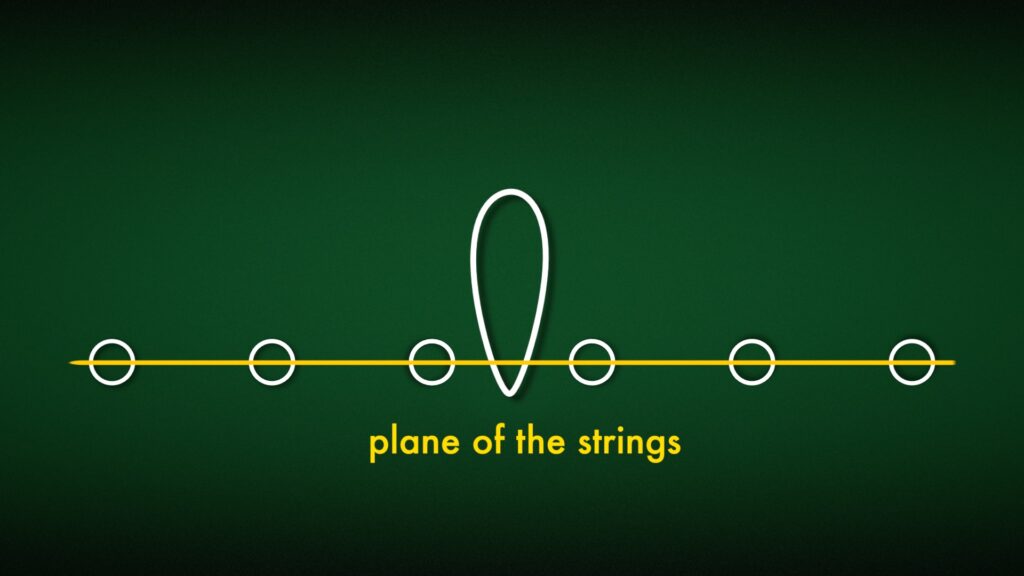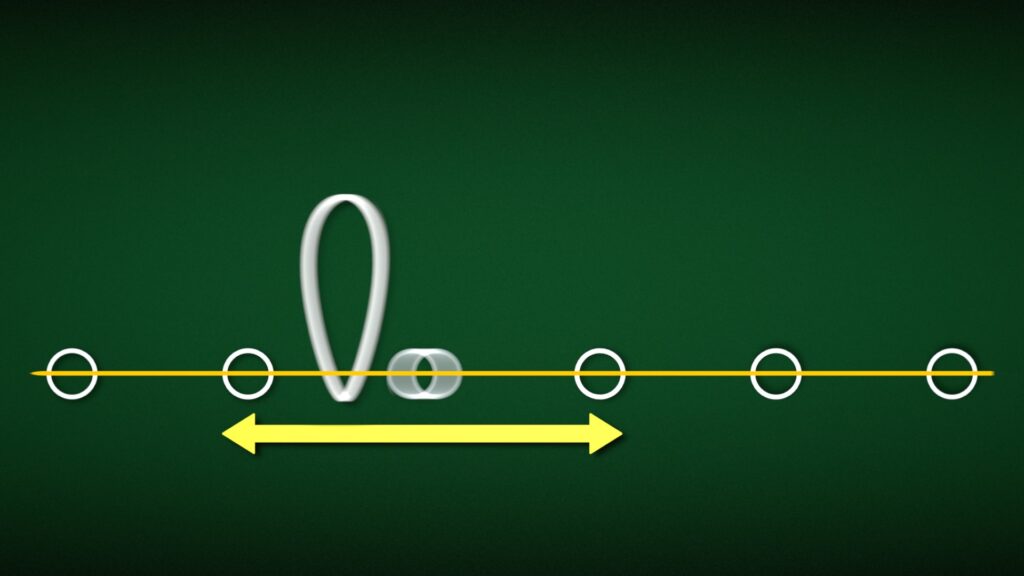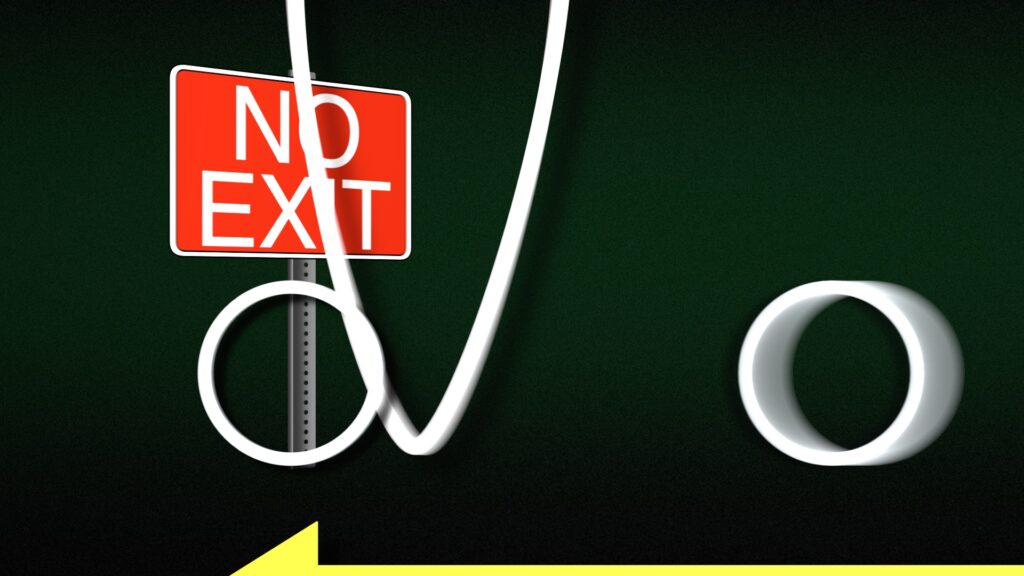The Problem of String Switching
Moving from one string to another is one of the most fundamental challenges in guitar picking. The need to do this efficiently is a requirement which exerts a profound influence on the types of picking motions that great players use.
Many players have difficulty executing lines that require picking across strings, although it may not immediately be clear to them why. They may hit wrong notes when they try to speed up. Or in some cases, they may not be able to speed up at all. A look at the geometry of picks and strings can help us understand what’s causing all the trouble.
Piercing The Plane
The strings on a guitar are arranged in a plane, such that when viewed in cross section, they form approximately a straight line. This is true even for guitars with radiused bridges, since the curvature of even an aggressive radius, like an old Fender, is still slight enough that it doesn’t really help with the trickyness this arrangement of strings creates.
To play a note, the point of the pick must descend far enough below that plane to make string contact:

When you do this, you’re positioning the pick in between two strings, right next to the one you want to play. The point of the pick is below the string height. Not by much, but below nevertheless. That’s how you can be sure that you’ll actually hit the string when you approach it.
From this orientation, you might imagine a picking motion that looks something like this, moving parallel to the string plane itself:

This hypothetical picking motion works fine for playing notes on a single string — the pick simply moves back and forth across the string, playing a note with each pickstroke. This is, of course, the alternating sequence of downstrokes and upstrokes we call alternate picking.
Trapped vs Escaped
But what if we want to move to a new string? Now we have a problem. Because if the pick’s point is low enough to play the initial string, then it’s low enough to hit the other strings too:

The point of the pick is still below the string plane, so moving too far in either direction will hit one of the surrounding strings, potentially sounding unwanted notes. The pick is basically trapped between the strings on either side of the one it is playing. And we already knew this, since we deliberatly positioned it between two strings to begin with.
I Want To Break Free
To move to a new string cleanly, we need to lift the pick out of the plane of the strings and escape, avoiding the strings that are trapping it. In other words, clean alternate picking across the strings can’t just be a motion that moves side to side. It must also, at some point, be a motion that goes up and comes back down again.
We don’t usually think about alternate picking as moving this way, but the logic is inescapable. If we don’t want to hit any of the strings that stand between us and the next string we want to play, we must escape. Figuring out how to do this efficiently, without hurting speed or fluidity, is the central challenge of string switching.
One obvious solution, like the sucker answer on a multiple choice test, would be to augment our side-to-side motion with a jumping motion right at the moment of the string change. But this turns out not to be what great pickers actually do. In fact, if you attempt this, you are likely to end up with the bouncy, tension-producing motion of stringhopping. Instead, the solution that the best players use is much more clever. And in the next section, we’ll find out what it is.